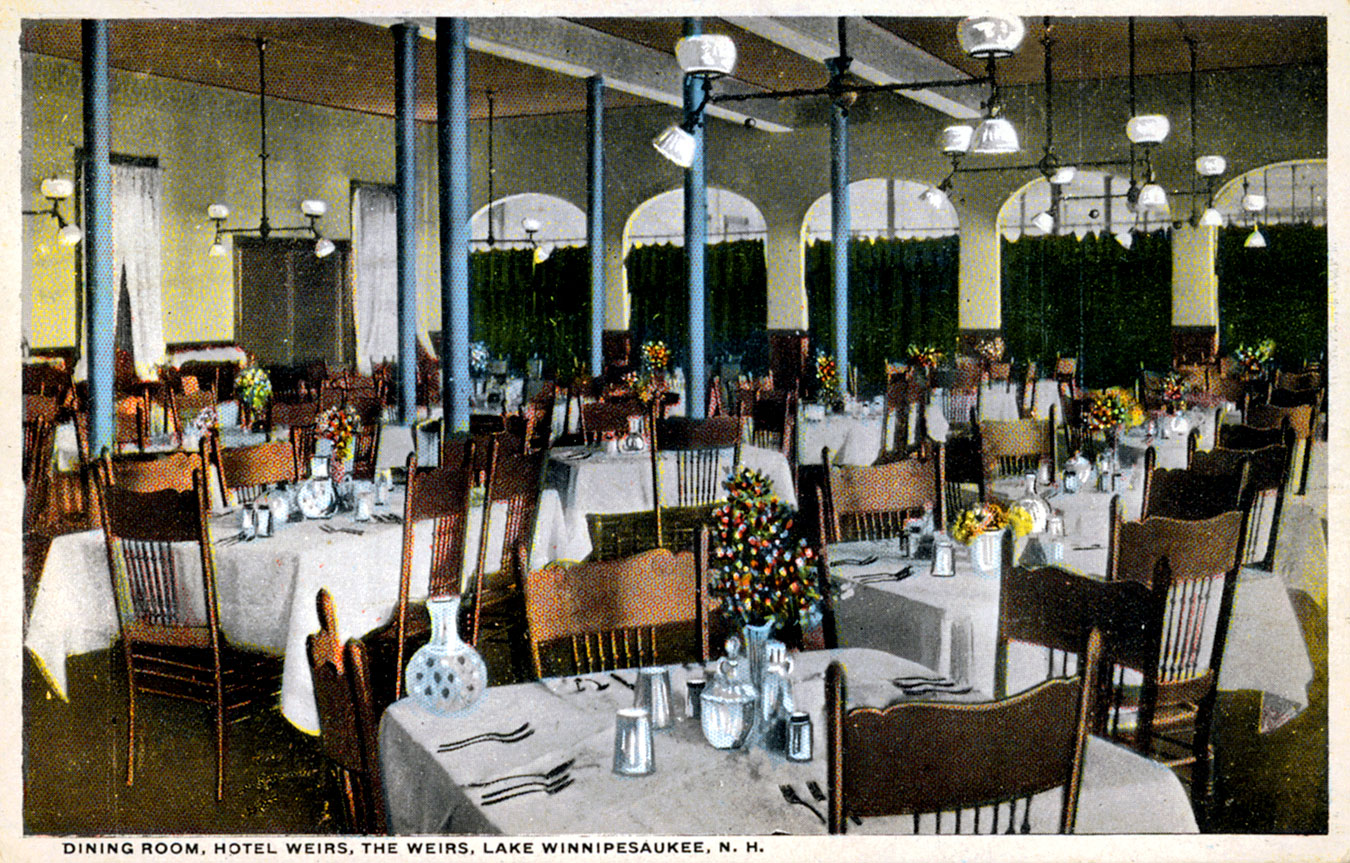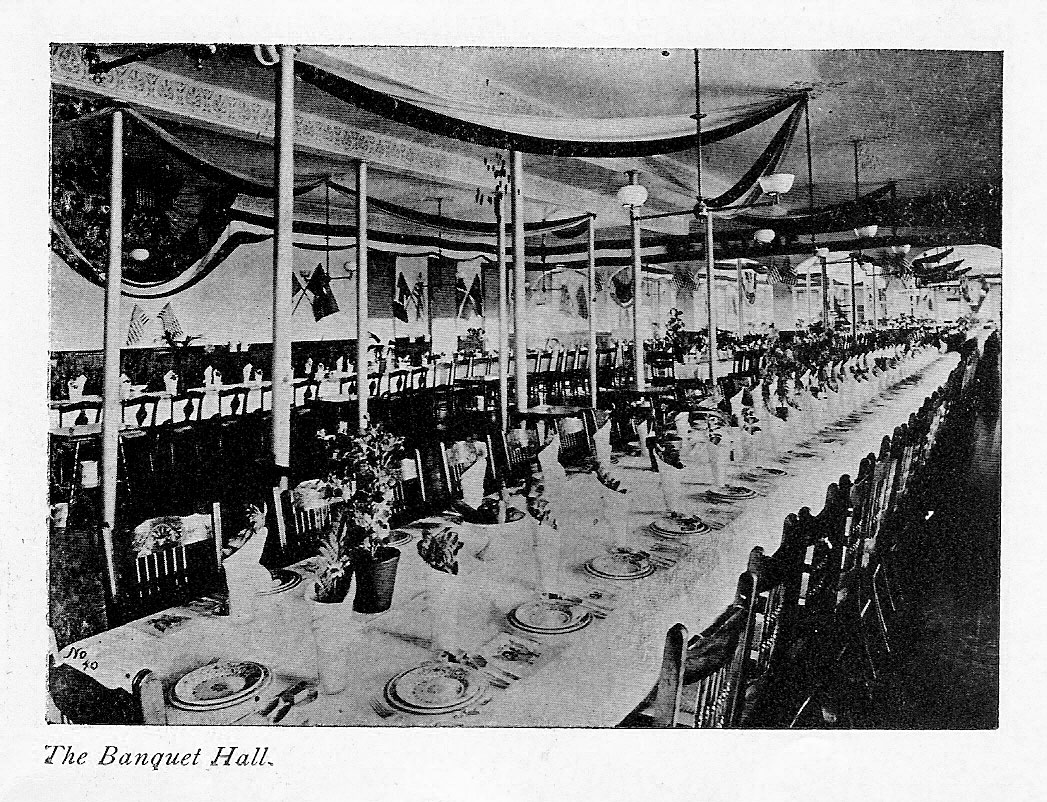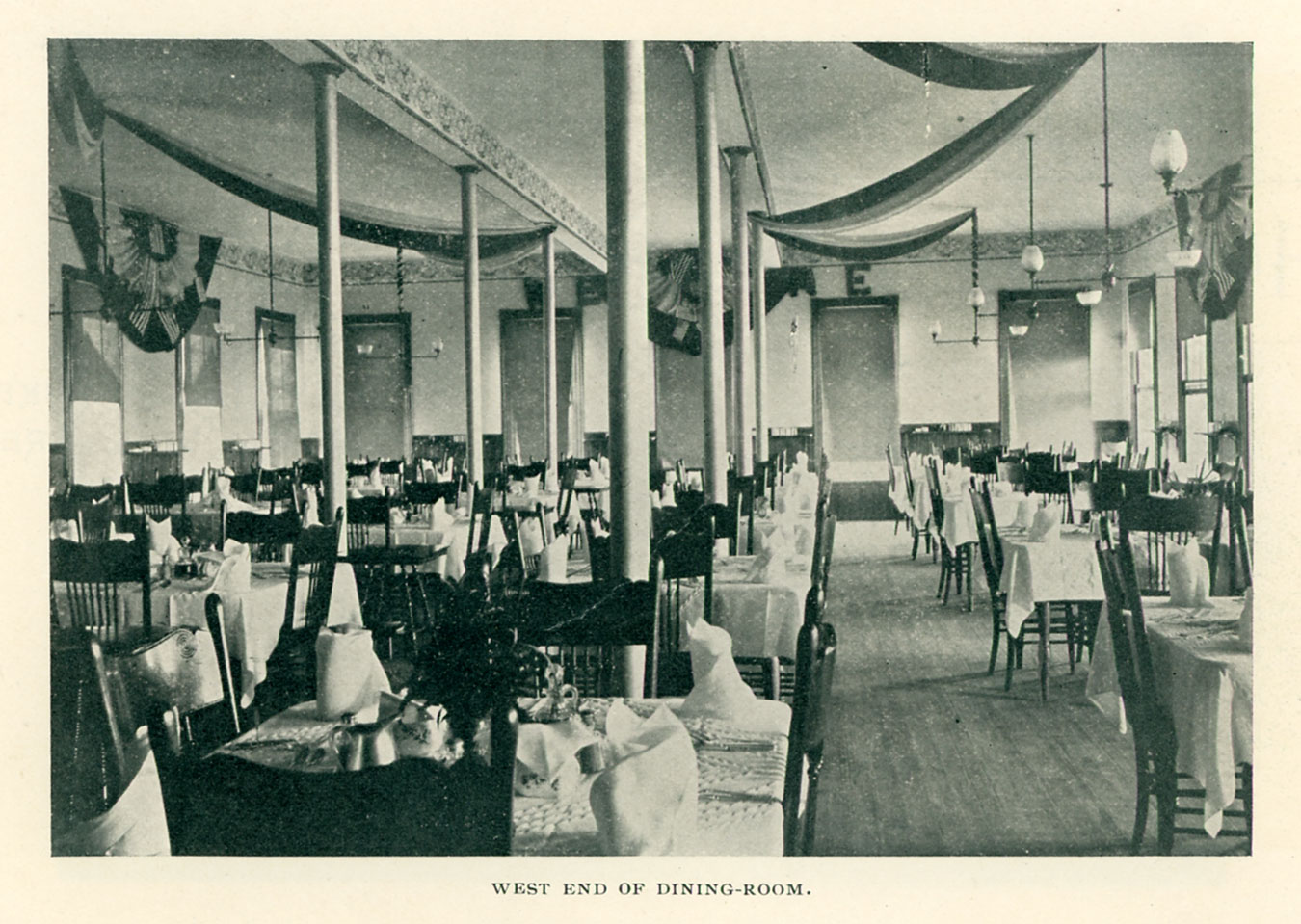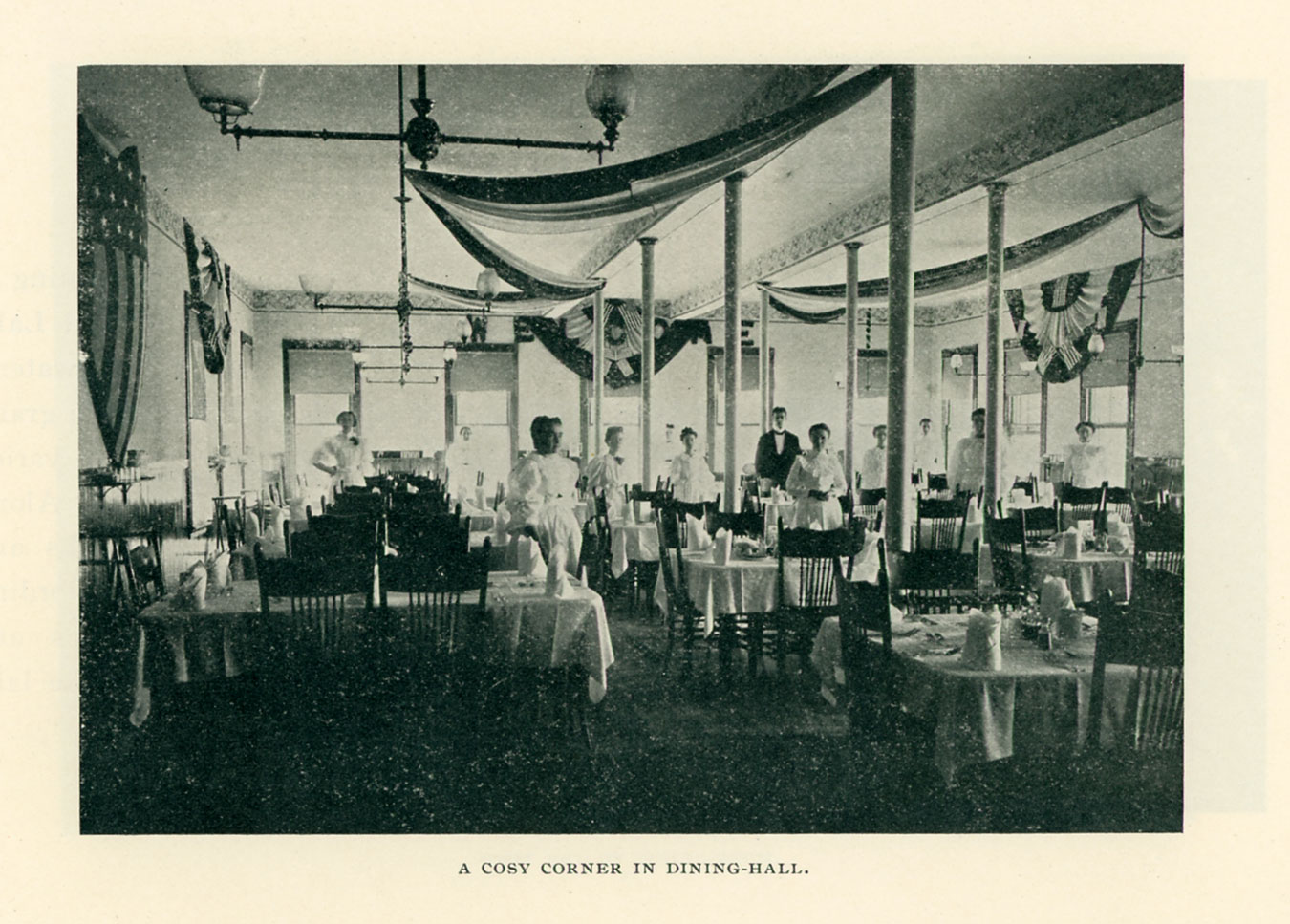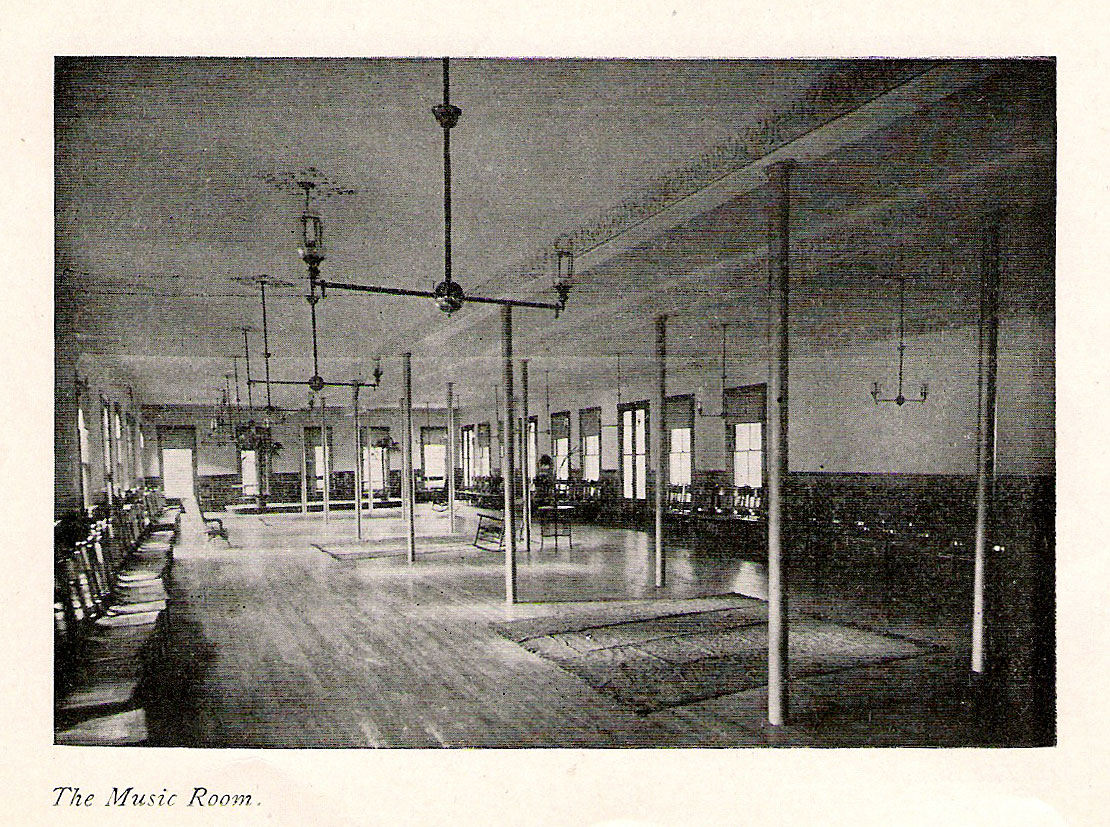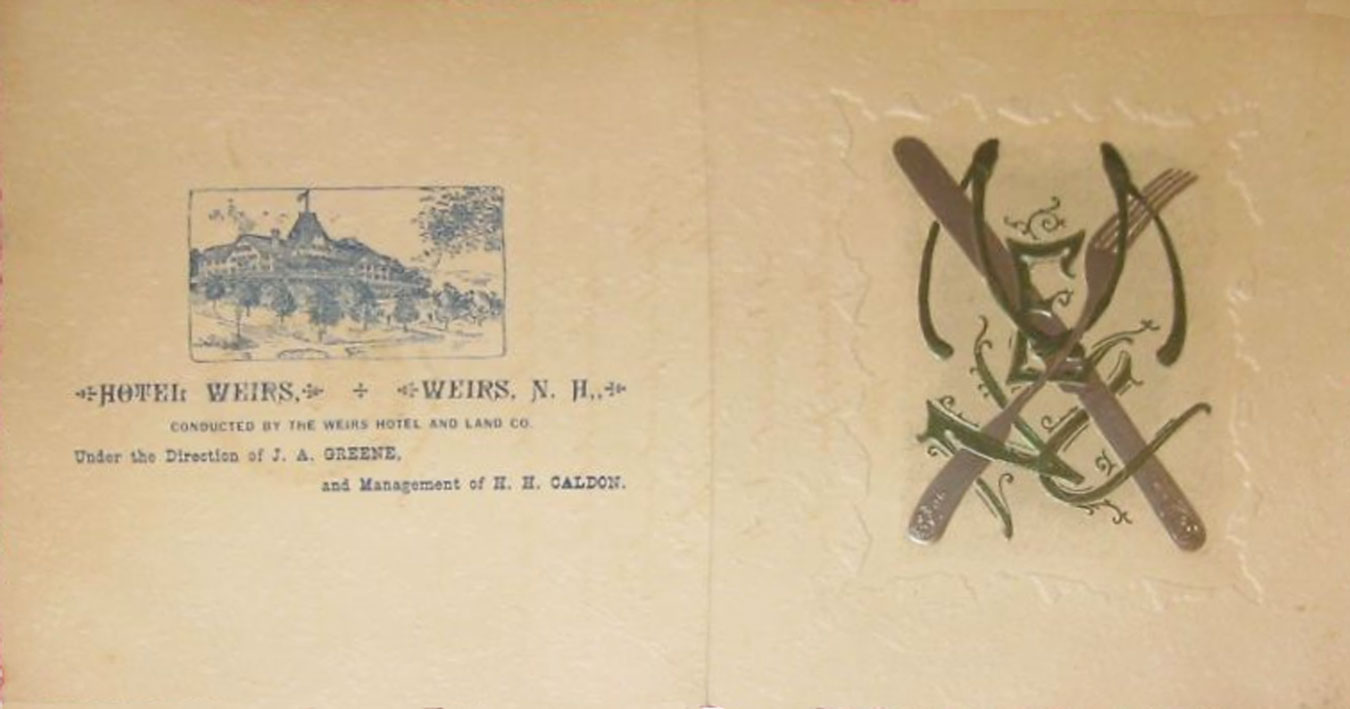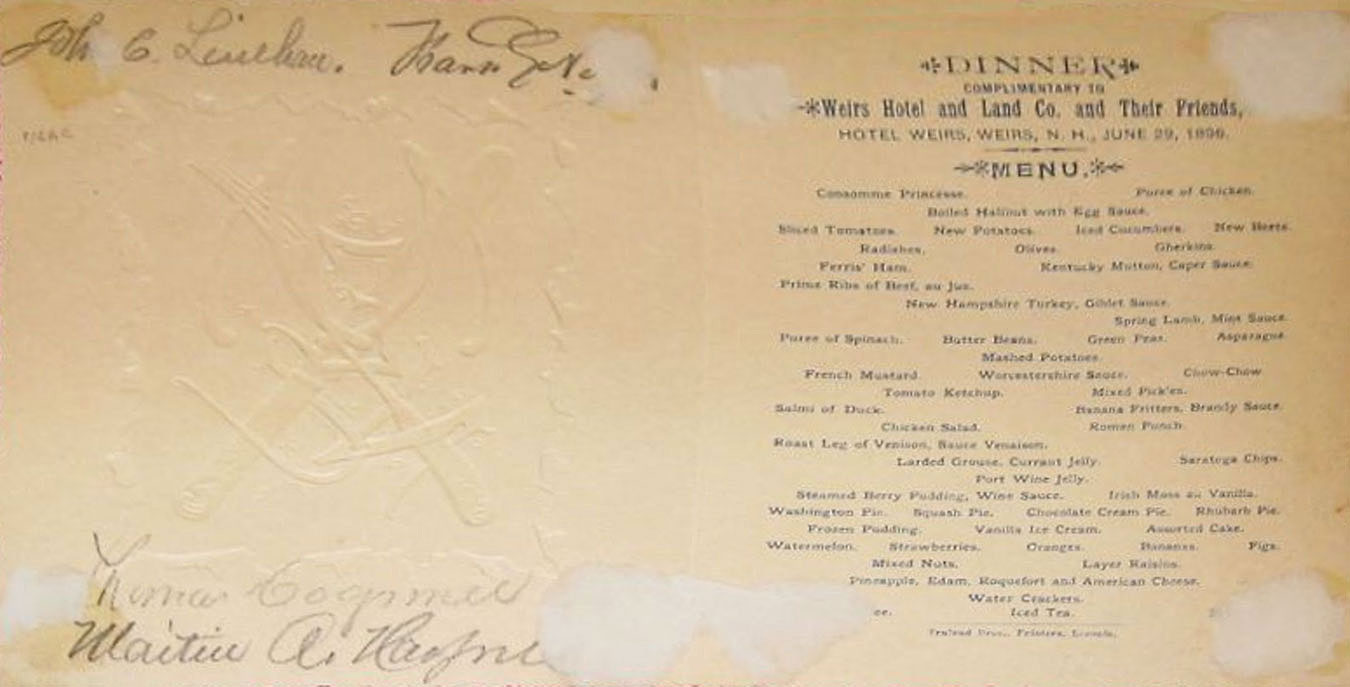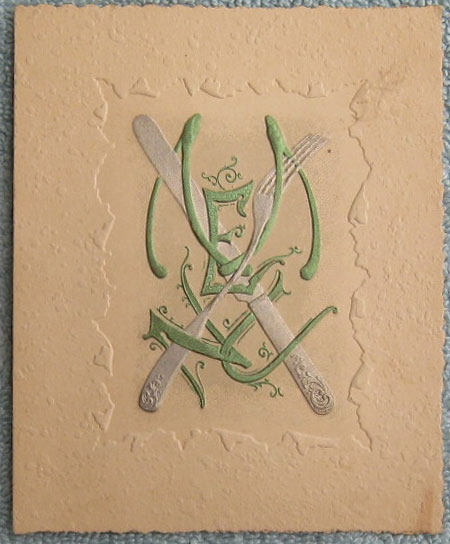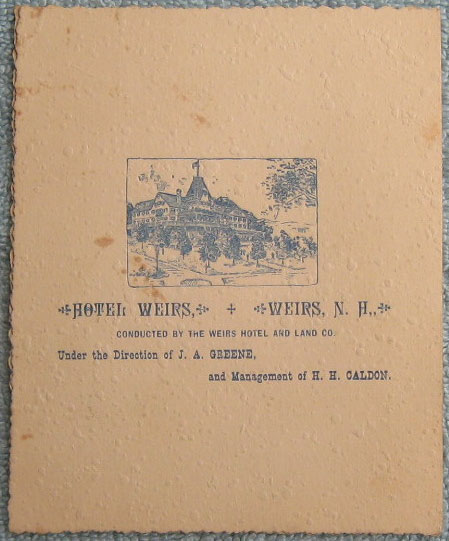Hotel Weirs Dining Room
Judging by the five arched doorways with portières (hanging curtains) at the end of the room and other photographic evidence, we are looking at the same room in the images below of the dining room and the banquet hall. The five arched doorways separated the two parts of the room. There was a shorter, everyday dining section, and a longer section that was used as a music room or ballroom for larger gatherings and special events. The two images were taken in opposite directions. The color postcard is looking toward the ballroom, and the ballroom photo is looking toward the dining room. Given the decor – patriotic flags and bunting – in the banquet hall photo, we are most certainly looking at a veteran’s reunion about to begin.
Views of the dining room, appearing in the Hotel brochure and also in the 1899 “Illustrated Laconian”. In these photos, instead of five arched doorways, we are looking at five windows at the far, “West” end of the room. Contrary to the description in the first photo, the windows were at the north end of the Hotel, as the Hotel faced east. In the photo with the dining room staff, the five windows are seen with their shades up. In both photos, the word “Welcome” is written over patriotic bunting draped above the windows.
After Dr. J.A. Greene purchased the Hotel in the 1890’s, he added 90 feet onto the dining room, according to Freeman C. Willis, who managed the Hotel for Dr. Greene. His account, An Old Yankee Innkeeper, can be read on the Library of Congress website. There is no question that the dining room was very large. When Dr. Greene ran for Congress (an election he lost), he held a banquet for his supporters. According to Willis, there were 525 guests at the banquet, served by 56 waitresses. In order to accommodate such a large gathering, “…we had to take down the portieres which hung in the archways dividing off sections of the big dining rooms and set tables right through the whole length.” With his wife taking on the role of head waitress/hostess, “…[she] had them seated and things coming on, slicker’n grease…everything going without a hitch.”
1896 Hotel Weirs Menus. There are no prices, as meals were included with a stay at the Hotel. This was a first class menu. Proteins on the menu included Broiled Halibut, Prime Rib, New Hampshire Turkey, Kentucky Mutton, Spring Lamb, Roast Leg of Venison, Ferris Ham, Salmi of Duck, Chicken Salad, and Larded Grouse. For starch there were New Potatos, Mashed Potatos, and Saratoga Chips (potato chips were invented in Saratoga Springs, NY in 1853). One could pick cold vegetables such as Sliced Tomatos, Iced Cucumbers, New Beets, Olives, Gherkins, Radishes, and Mixed Pickles. (Apparently, tossed salads are a more recent invention.) Hot vegetables included Puree of Spinach, Butter Beans, Green Peas, and Asparagus. The Hotel also had a great desert menu, including various fruits and cheeses, Steamed Berry Pudding, Irish Moss with Vanilla, and four kinds of pie – Washington, Squash, Rhubarb, and Chocolate Cream. It is interesting to note how condiments such as Tomato Ketchup, French Mustard, and Worcestershire Sauce also made their way onto the menu.
In the upper left corner of the menu is the handwritten name of John C. Linehan, the honoree of the 30th New Hampshire Veterans Association reunion in 1906.










